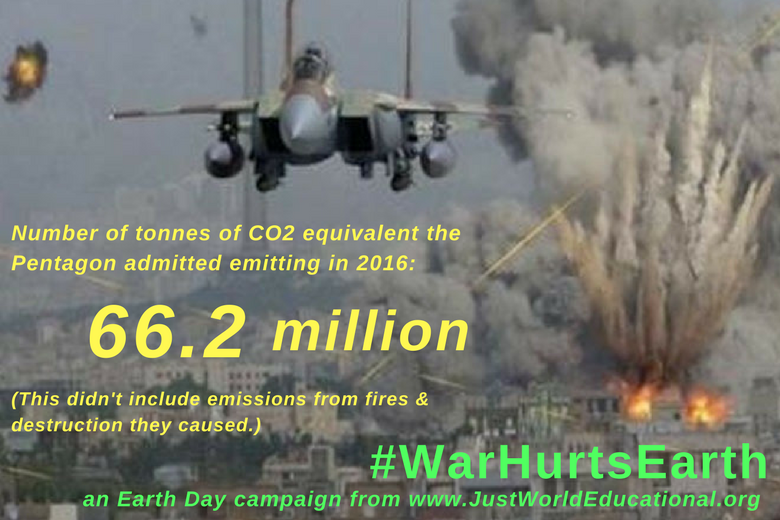We’ve been refining our thinking for the #WarHurtsEarth campaign that we’re planning for Earth Day 2018 (April 22.) As you can read here, we’re planning for this campaign to have both an “In Real Life” set of activities and a strong, complementary online component. We are also, now planning to add in at least one webinar, perhaps scheduled for the week before Earth Day, when interested people can hear and then join a discussion featuring two or three good experts in this field.
We have now (March 2) completed the drafting of the promised “Public Statement” that we’ll be using as major organizing tool for the campaign, and here it is:
TO SAVE THE EARTH, CURB MILITARISM!
Please help us to circulate this as widely as possible!
We are also planning to a user-friendly resource page on the War/Earth issue, on this website. But since we have some “architectural” issues to face re the design of this resource page, we’ve decided to start sharing some of our gathered resources here, as an interim measure.
There is a lot more to come! But here’s a first helping:
1. Sources on the Pentagon’s “everyday” polluting:
- The Department of Energy’s “Federal Facility Reporting” on “Annual Energy Data and Sustainability Performance”: This is a great portal page from which you can get the figures the Pentagon (Department of defense) and all other federal agencies report report, regarding their greenhouse gas emissions. (The “66.2 million tonnes of CO2-equivalent” figure used above comes from their reporting for 2016.)
- Some more detail on how the military generates these emissions can be found in this 2011 article by Patricia Hines and this 2015 article by Lisa Savage.
- This page on the website Civilian Exposure has links to fairly up-to-date information about the contamination situation at Camp Lejeune in NC and to the EPA’s information about the status of the military’s 140 other “Superfund” (super-contaminated) sites around the country.
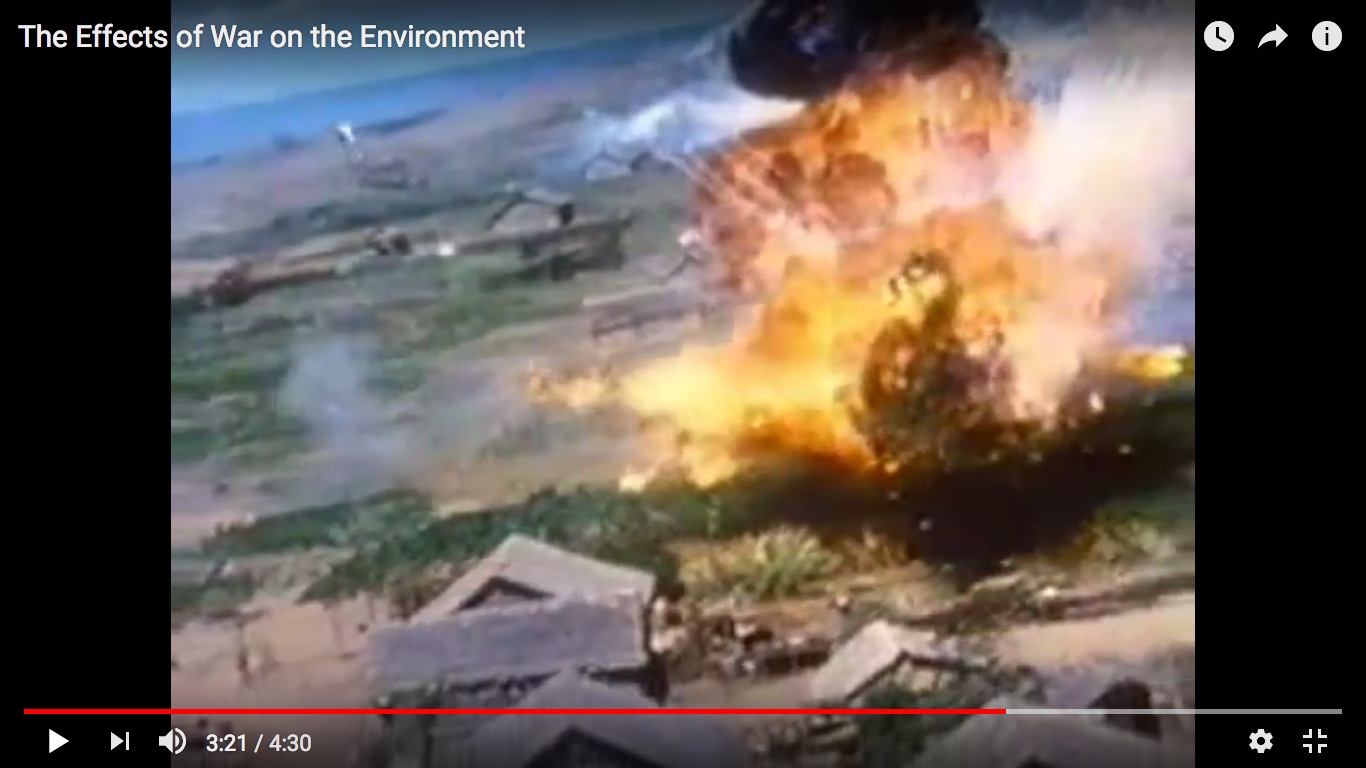 Someone called Alex R made and shared a terrific little video titled “The Effects of War on the Environment”, which in just 4.5 minutes explains just about all you need to know about why it is the US military is such a big polluter, in both “peace-time” and war. Highly recommended!
Someone called Alex R made and shared a terrific little video titled “The Effects of War on the Environment”, which in just 4.5 minutes explains just about all you need to know about why it is the US military is such a big polluter, in both “peace-time” and war. Highly recommended!
2. Sources on nuclear weapons and their contaminating effects:
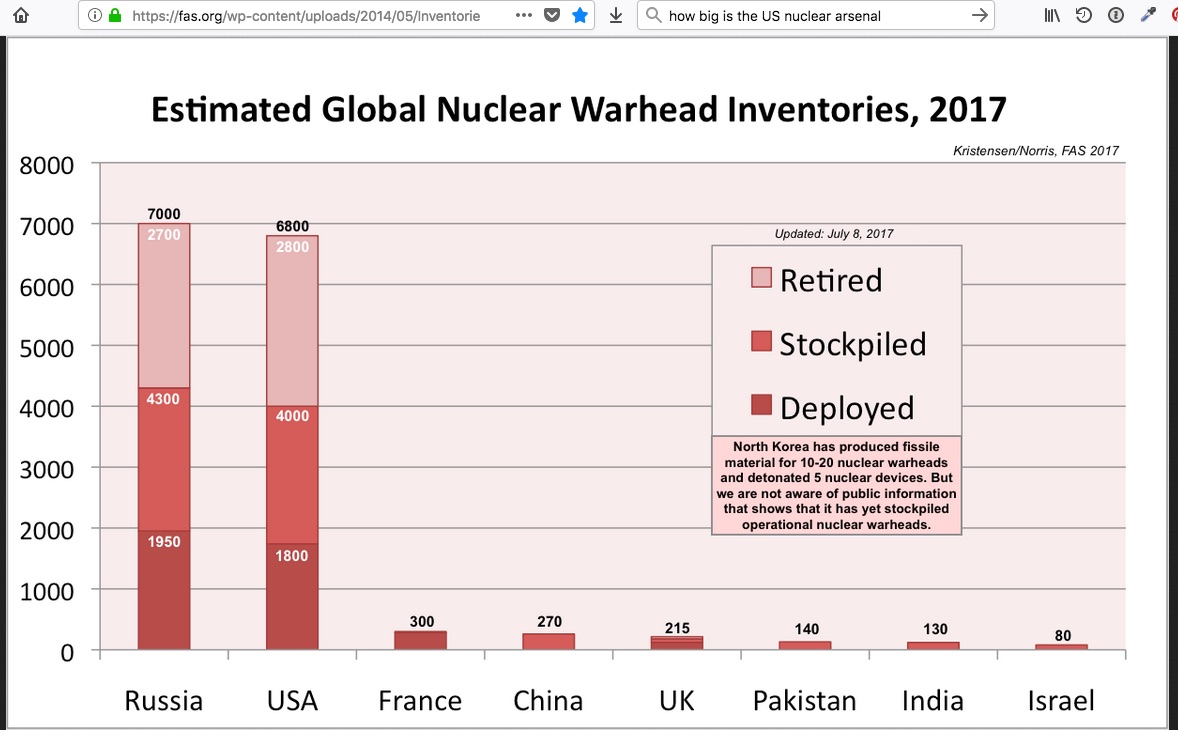 The Federation of American Scientists has this handy and up-to-date bar-graph showing which countries have how many nuclear warheads. (What they don’t tell you there is the explosive capacity of these warheads, which in most cases is many, many times that of the 15 or so kilotons of TNT equivalent in the Hiroshima and Nagasaki weapons.)
The Federation of American Scientists has this handy and up-to-date bar-graph showing which countries have how many nuclear warheads. (What they don’t tell you there is the explosive capacity of these warheads, which in most cases is many, many times that of the 15 or so kilotons of TNT equivalent in the Hiroshima and Nagasaki weapons.)- In 2014, the Brookings Institution published this factsheet: “50 Facts About U.S. Nuclear Weapons Today.”
- The Nobel Peace Prize-winning International Campaign to Abolish Nuclear Weapons has some useful information at this page on their website about the effects of nuclear weapons o health and the environment.
3. Sources on the environmental effects of some recent (and current) wars:
- Joshua Frank had this general, 2010 round-up on the effects of the US-led war in Afghanistan on that country’s environment.
- Afghani engineer Sayed Hashmat had this 2015 survey of the main environmental challenges his country faced 14 years after the US-led invasion of his country.
- Lebanese blogger “Lebanize” published some in-real-time reporting of the environmental harm from Israel’s bombing of many Lebanese infrastructure facilities in July-August 2006, e.g., here.
- A Reuters report from January 2007 catalogued some of the environmental damage inflicted by Israel in that war.
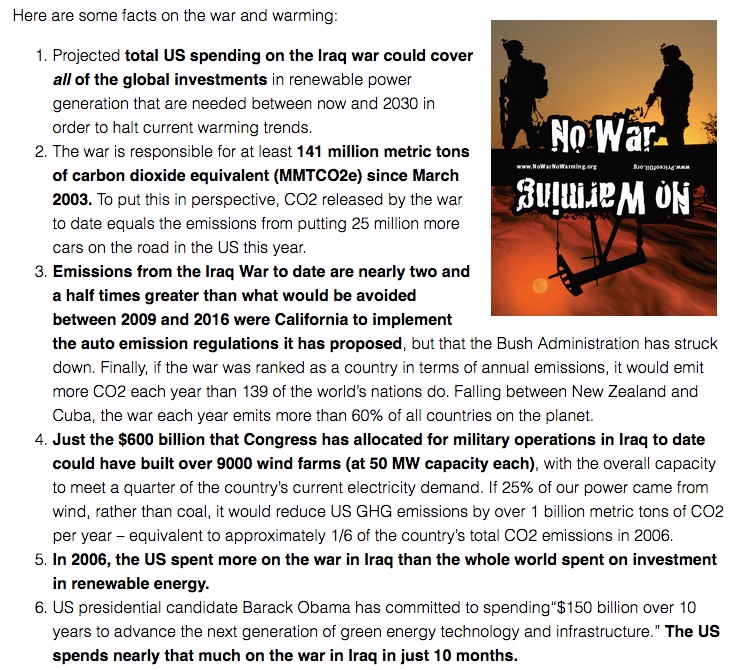 In 2008, Oil Change International published a well-researched report, “A Climate of War”, on the environmental costs (including opportunity costs) of the US invasion of Iraq. Some of its main findings are shown on the right.
In 2008, Oil Change International published a well-researched report, “A Climate of War”, on the environmental costs (including opportunity costs) of the US invasion of Iraq. Some of its main findings are shown on the right.
4. Some short videos on the US military and the environment:
In addition to the “Effects of War on the Environment” video listed above, here is another informative short video:
- “How Powerful are Modern Nuclear Weapons?” from TestTube News, 3m38s.
Then, there’s a whole, massive category of videos available online that fall into a category that one might call “war porn.” But watched with an environmentalist’s eye, they can be pretty shocking. For example:
- “How the U.S. Air Force bombs ISIS?” (6 mins.)
- “Rare USAF Video. B-1, B-2, B-52 Heavy Carpet Bombing & F-22, F-16 Missile Test” (4m32s)
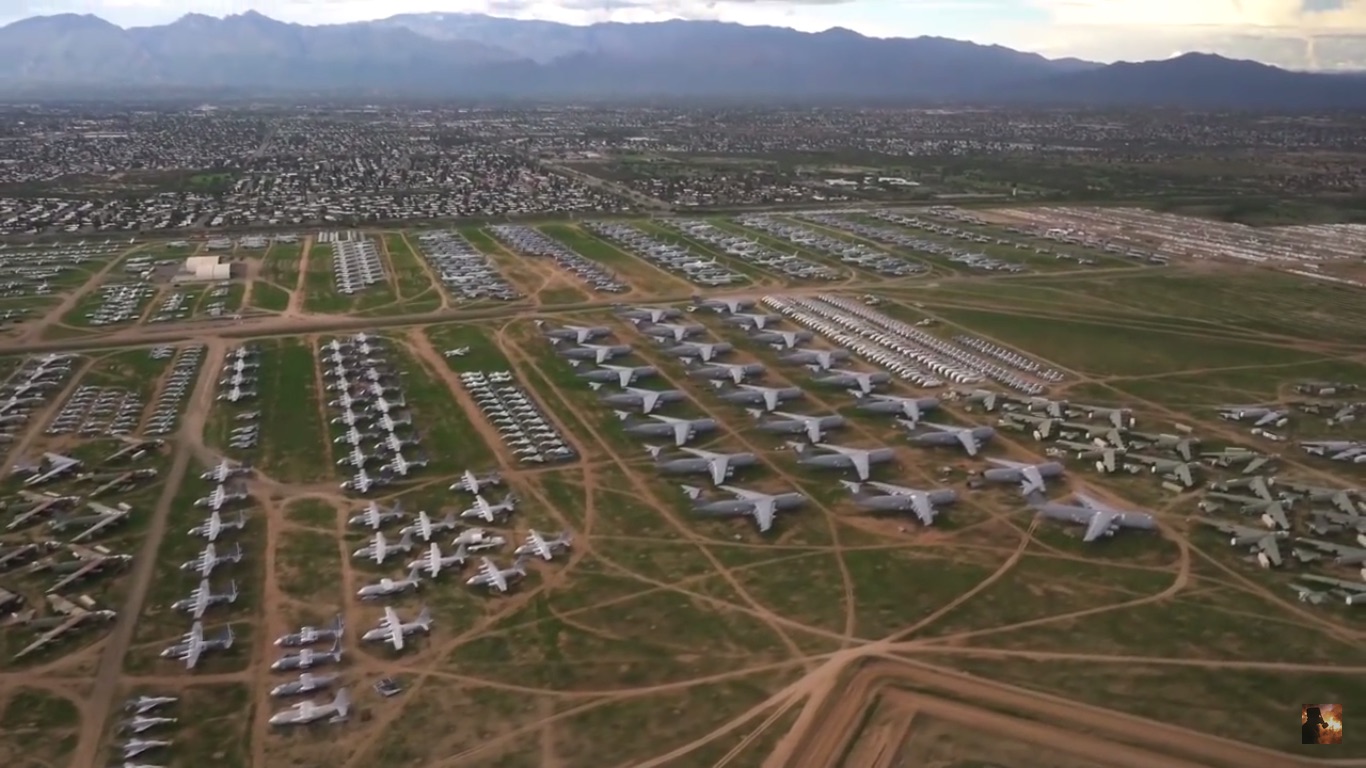 “Aerial View of the Aircraft Boneyard at Davis Monthan AFB” (6m38s) At the end of that video, there are some shots that clearly show how close this massive aircraft junkyard is to some regular suburban-Tucson housing.
“Aerial View of the Aircraft Boneyard at Davis Monthan AFB” (6m38s) At the end of that video, there are some shots that clearly show how close this massive aircraft junkyard is to some regular suburban-Tucson housing.
5. Books:
- Barry Sanders, The Green Zone: The Environmental Costs of Militarism (AK Press, 2009.)
- Gar Smith, ed., The War and Environment Reader (Just World Books, 2017.)

